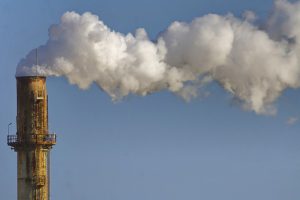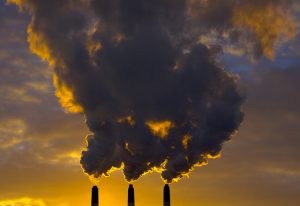Bai Yunwen, deputy executive director of Chinese NGO Greenovation Hub and director of its climate and finance policy centre
With a cap on coal consumption and stronger policy and action on cleaner use of coal, we think China can achieve its target of a 65% reduction in carbon intensity. There is also the hope of a peak in coal consumption by 2020 or earlier, which will further reduce carbon emissions and bring us closer to the more ambitious target of a 70% fall in carbon intensity by 2030.
In order to achieve the goal of seeing non-fossil sources of energy account for 20% of all primary energy, the state should put forward further targets for controlling coal and provide more detail on the proportion of energy to be drawn from renewable sources such as wind and hydropower.
The document did not include any post-2030 emissions targets, but achieving the pre-2020 and 2030 targets would greatly improve the outlook for further reductions. If a 2025 peak in CO2 emissions can be achieved, it would then be possible to see greenhouse gas emissions return to 2005 levels by 2050.
Lunyan Winnie Wu, WWF China’s climate and energy director
China’s INDC is of huge political significance. China has become the first developing nation to commit to a carbon peak, it has put forward a grand plan to cut emissions, and it may achieve all this by 2030 or even earlier.
We believe the goal of seeing non-fossil sources of energy account for 20% of all primary energy may be surpassed, and that the state can provide more detail on the proportion of non-fossil energy to be accounted for by the various clean and renewable energy sources.
The economic outlook in the EU is bleak and there is a lack of financial and technical assistance from the developed nations. For China to have put forward post-2020 emissions cuts targets demonstrates it is acting as a responsible nation. China was not obliged to commit to a peak carbon target.
China’s INDC will have a positive impact on the Paris climate talks, and prepares the way for a global agreement. It’s also a spur to the developed nations, pushing them to achieve their pre-2020 commitments. It also sets an example for the developing nations and requires the developed nations to provide more aid, in particular for adaptation. China will also share valuable experience with developing nations through South-South cooperation.
If a carbon peak can be achieved around 2030, we would hope that subsequent economic growth would no longer be dependent on carbon emissions, and that those emissions would steadily fall. But China is after all a developing nation and needs economic growth in order to relieve poverty.
Li Yan, Greenpeace climate and energy campaigner
The post-2020 climate goals announced today push China’s climate policy planning out beyond the traditional five-year scope, and build on last year’s joint statement with the US to provide a clearer and more concrete mid- to long-term emissions roadmap. This is a declaration to the world: China is ready for the year-end Paris climate talks.
Greenpeace has calculated that reducing carbon intensity by 65% by 2030 and achieving a peak in carbon emissions around the same time are in effect the same goal. But China will have to hit and go beyond these goals if it is to ensure emissions stabilise and start to fall prior to 2030.
For near-term policy, the most important task is to set a coal consumption cap and an absolute national CO2 emissions cap for the imminent 13th Five Year Plan period, and further promote the large scale and sound development of renewable energy.
Yang Fuqiang, Senior Adviser on Climate, Energy and Environment for the NRDC China Program
China’s INDC is a comprehensive, realistic and integrated set of goals, and with effort can be achieved. It will be of help at the Paris climate talks. China’s new targets demonstrate its determination to increase energy efficiency and develop clean energy. The inclusion of a national coal consumption cap in the 13th Five Year Plan will help China reach a coal consumption cap by 2020, and thus achieve a faster clean energy transition.
The INDC does include some leeway – a carbon emissions peak may be achieved as early as 2025, while the carbon intensity reduction target could have been a bit higher, at over 70%. The forest carbon stores target is entirely achievable and could even be surpassed.
China’s proposal to spend 41 trillion yuan on climate change is unprecedented and shows how seriously the Chinese government is taking this.However, China has not set post-2030 emissions targets. But if China can achieve a carbon peak in 2025, then greenhouse gas emissions may fall to 2005 levels – about 5 billion tonnes – by 2050. If China can achieve an early peak, closer to 2020 than 2030, then there is a better chance of a global carbon peak in 2020.
Glen Peters, Cicero climate research institute
To meet the carbon intensity target requires continuation of the 2005-2014 trend through to 2030. Based on GDP growth most estimates put a peak in Chinese emissions somewhere between 2020 and 2030, a range also suggested by some analysts before the INDC announcement based on structural changes in the Chinese economy. The non-fossil fuel target is also a continuation of current trends. A continuation of current trends need not be easy, but it is an important point of comparison. It also suggests that the INDC is conservative, and ratcheting up may be an option in the years ahead.
Several technical aspects arise from the INDC. Notably, China does not currently report CO2 emission estimates for Monitoring, Reporting, and Verification (MRV). The just-released 3rd economic census led to substantial upward revision of China’s energy consumption. GDP is also thought to be highly uncertain. Statistical revisions could make the carbon intensity target a moving target, and worryingly an adjustable target without MRV. A focus on the peak year and level may be a more robust policy.
The most glaring issue, found in most INDCs, is what happens after 2030. Peaking Chinese emissions is only a small step towards keeping global average temperatures below 2C above preindustrial levels. The real challenge is for China to reduce emissions at 5+% per year after the peak.
Monica Araya, commentator on Latin American climate and energy policy
What China does (or not) to reduce emissions will have a profound effect on the prospects for climate security around the world. It has several implications for Latin America.
The first affects Brazil, the largest emitter in our region. China and Brazil are partners in BRICS and in BASIC in the climate negotiations. Brazil has been a climate leader and has the talent and know how to deliver a high quality INDC, so why, unlike China, haven’t they done so yet?
China has sent a powerful signal to the world: climate change matters and you can still reduce emissions while growing the economy. Our region still needs to shake off the obsolete notion that growth and climate action are incompatible. Much of the drive in China for tackling climate change comes from the realisation that pollution is bad for the economy and for politics.
Ministers of finance and business leaders that resist tough climate targets need to learn that climate inaction has a cost. Unlike China, Latin America doesn’t need to “decarbonise” its energy sector (mainly because of hydro power). We need to avoid the carbonisation of our economies – finding clean growth opportunities and avoiding the ‘dirty’ ones that have impacted other countries’ economies, natural capital and citizens.







